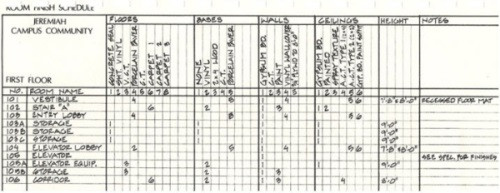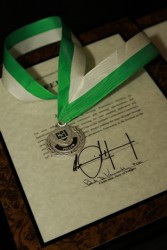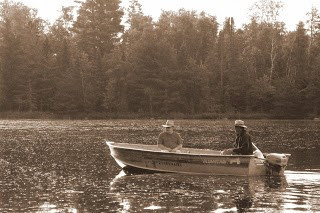Thirty or so years ago, when I graduated from architecture school, we had a couple of types of finish schedules. They were fairly simple tables, but, in conjunction with the specifications, they did a pretty good job of showing what finish materials were used where, and what colors of finish materials were required.
I recently received an e-mail from CSI, encouraging me (and, I trust, thousands of others) to volunteer to work on an Institute committee or task team. It reminded me of how I became involved in volunteer work for CSI, and how much that work meant to my career.
In the LinkedIn CSI Leaders group, Joy Davis recently began a series of discussions under the heading #CSIStats. The goal, as expressed in the first post of the series, is "helping CSI leaders understand where CSI stands by sharing facts about the Institute … to help you start and participate in discussions about who CSI is and where the Institute should go in the future."
IN THE PUBLISHING INDUSTRY, IN E-MAIL, AND ON THE INTERNET, USE OF UPPERCASE IS LIMITED. STUDIES HAVE SHOWN THAT MOST PEOPLE FIND IT HARDER TO READ UPPERCASE, AND TODAY'S DIGITAL ETIQUETTE VIEWS USE OF ALL UPPERCASE AS SHOUTING. WHY, THEN, DO WE CONTINUE TO USE IT ON DRAWINGS?
For many years, I was one of the instructors for my CSI chapter's certification classes. In addition to explaining what CSI's practice manuals say, I liked to include horror stories - real-world examples of the ways people found to really mess up a project. One of my favorite stories came from a public sector waste treatment agency. The project was a relatively simple addition to an existing building at one of the waste treatment facilities, to provide shower and locker rooms for the employees.
Published each year, CSI's "Honors & Awards Guide" describes the requirements for each Institute award and honor, and contains the information needed to make a nomination. Despite the availability of the Guide, which is posted on the Institute website, many nominations are deficient in one way or another. Given the amount of information in the guide's forty-five pages, it is not surprising that questions arise, but staff, the chair of the Awards Committee, and the chair of the Jury of Fellows will gladly answer those questions.
Each year, most organizations set aside one day to acknowledge the efforts of their members, and to honor those who have made significant contributions. CSI is no exception; we have award ceremonies at chapter, region, and Institute levels. The crowning moments take place at the annual convention, where Institute awards are presented, where we honor those selected for Distinguished Membership, and where we honor those who have been elevated to Fellowship. While the criteria for most awards are fairly straightforward and easy to understand, there is a mystique surrounding Fellowship; but more on that later.
And then there are dimensions…
In the last article, "Absolute nonsense", I wrote about the great number of words available to express fine distinctions of meaning, and how, properly used, they can be quite precise. In daily use, however, words often are used incorrectly, and most would agree that many disagreements are based on different interpretations of what we say.
A few weeks ago, while patiently waiting in that a.m. parking lot we call a freeway, I was listening to a drive-time talk show. "Not many specifiers calling in today," I thought. Caller after caller would agree with the host's comments by saying "Exactly!" - even when the stated position was complex, and the callers appeared to grasp only part of the issue.
"Existing communication methods have done a good job of addressing most of the information exchange involved in construction. E-mail and electronic file transfer are commonly used between owner and architect, and between architect and consultants. One conspicuous oversight has been the contact between the design professional’s office and the contractor in the field.
My, how things have changed! The brave new world of 24/7 interconnectivity certainly is marvelous; each day brings new ways to learn more about everything, sometimes too many. I'm not going to give you the old line about "When I was a kid, we had to walk two miles to school, through the snow, uphill both ways!" And I'm not going to rail against progress. I am fascinated by new technology and new products, and I still enjoy learning about everything possible.
Isn't it interesting, that amidst all the hoopla about "sustainable" design, there has been little reduction in the stream of new, improved, state-of-the-art, can't-live-without-them products that increase energy demand? Most of these supposedly life-changing inventions offer needless conveniences, and most of them require electricity to operate. They appear to have been created for no better reason that someone could do it.
One of the most difficult things specifiers do is try to decide if one product is equivalent to another. Fortunately, many product characteristics are based on industry standards, which can make those products easier to specify and to evaluate.











